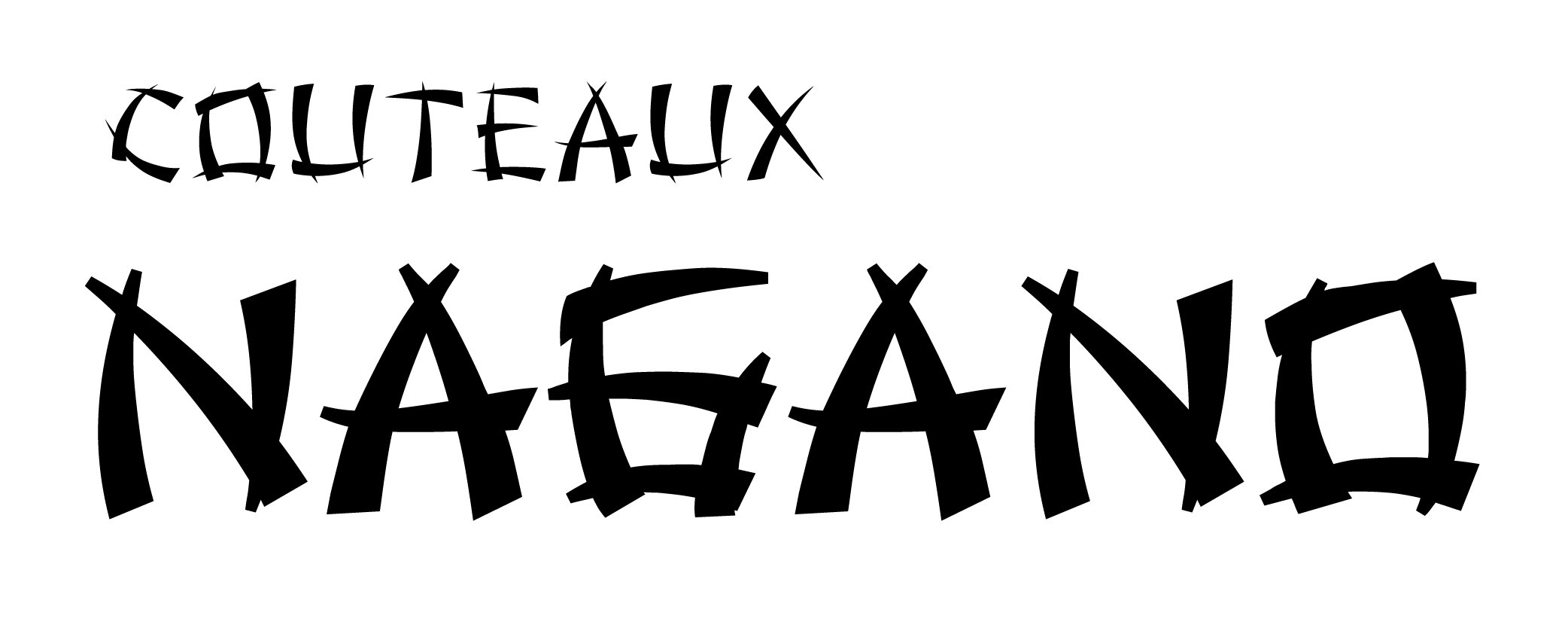There are several types of Japanese knives for preparing food. Most of the styles used today were probably developed towards the end of the Tokugawa period (or Edo period, 1600-1868). Each style of knife has its own uses, and we'll see the main ones. Each style of knife can be made in different sizes with different designs, different metals and different handles.
To learn more about the designs, please see the article on different knife designs or finishes: HERE
To learn more about the handles: HERE
Are you wondering which metal to choose for your knife? HERE
Santoku (Japanese All Purpose)

Santoku, also known as “bunka bocho” , is mainly used for vegetables, fruits and protein. Santoku means "to solve three problems" and the three problems are slicing, dicing and hash. These knives are generally flatter than Gyuto knives and have a less sharp point. Since they are flatter, the wrist is in a more natural position and the shoulder does not need to be lifted that high. These knives do not require as much space to cut. These are the most popular knives in most Japanese homes. The general size ranges from 165mm to 180mm. Because it is double bevel, the Santoku can be suitable for both right and left handed people. If you are looking for a first knife to buy, the Santoku is our top choice. The Bunka model is similar in size and shape, but with a slightly cooler tip. The Santoku is a great first knife to get!
Bunka (Japanese All Purpose)

The Bunka model is similar in size and shape to a Santoku, but with a slightly cooler look. With a straight edge and slanted towards the tip, this design makes it excellent for marking vegetables and has the added benefit of being very effective at getting under fat and sinews of meat than a Santoku. Much like the Santoku, the overall size ranges from 165mm to 180mm.
Gyuto (Chef's Knife)

This knife is known as the chef's knife used in western professional cooking. This is a good first knife to have, as it can usually do it all. When preparing vegetables, it is used in the form of a cut or push near the heel of the knife. The gyuto is also used to cut stiffer fruit and make thin cuts at the tip of the knife. It is also used for many cuts of meat. For large cuts, it is used for sawing in both directions. On the other hand, it is used to cut more tender meats and to grow more muscular pieces of meat. There is usually a slope from the heel of the knife to the tip, causing the wrist to point down and the shoulder to lift up when cutting. The general size ranges from 180mm to 270mm. 180mm is more like a more agile knife size, while 210mm is more like a standard size and allows more slicing. The 210mm is more often used by chefs. The 270mm has more cutting power, but is much bigger and longer, which makes it more difficult to use. The Gyuto is a double bevel knife, so it is suitable for left-handed as well as right-handed people.
Nakiri (Vegetables)

Several years ago, the Japanese diet consisted mainly of vegetables and fish. This knife was in the most used in Japanese homes to cut vegetables. The square tip gives the knife a feel of strength and safety superior to the tip of Santoku and Gyuto, and allows it to cut dense products at the tip. This knife has a flat edge. Some varieties of Nakiri have a blade profile that slopes slightly towards the handle. This makes the grip more comfortable, causing the hand to tilt slightly and use the strength in his forearm when cutting. A popular alternative to Santoku. The general size ranges from 165mm to 180mm. The Nakiri is also made with a double bevel.
Petty (Small chef's knife and pairing)

The style of the Petty knives is very similar to the style of the Gyuto, only smaller. This knife is used for peeling fruit or for doing small, complex jobs on food. The general size ranges from 90mm to 150mm. The Petty is a great choice as a second knife or to give as a gift.
Sujihiki (Slicer)

Sujihiki is often recognized as the western version of Yanagiba. The term sijihiki means "to slice". There are several kinds of knives for cutting meat. Sujihiki is used more and more. It is a knife designed to slice meat such as “roast beef”, cold cuts or any meat. More and more it is also used to cut sashimi. Sujihikis are designed with a double bevel so it is suitable for both left and right handed people. Its standard format varies from 180mm to 270mm.
Yanagiba (Sashimi)

Literally a willow blade, referring to its long and narrow shape, the Yanagiba is the most popular knife for cutting fish. It is used to highlight different textures of fish in their techniques. One of the differences with the Sujihiki is that this knife is designed with a single bevel. So a left-handed model and a right-handed model are therefore necessary. The size of the Yanagiba varies between 210 mm and 360 mm. The most popular size is 270mm.
Honesuki (Boning)

A Honesuki is a knife for boning poultry or meat. It is very effective at separating meat from bone. It is triangular in shape and is also very practical for peeling round fruits. The standard size is 150mm.
Kawahagi (Skinning)

Knife specially designed for butchering large animals. Separating the flesh from the skin will be a lot easier with this great tool. This type of knife is made with a double bevel so it can be used by left and right handed people. Another great hunting knife to get hold of. The standard size is 180mm. A smaller size for poultry can be made on request.

